Curzon Consulting become MCA members
Curzon Consulting has joined The Management Consultancies Association (MCA) as a member.
Curzon Consulting Partner, Douglas Badham, commented:
“We are delighted to have joined MCA as a member at an exciting time for Curzon Consulting. Our recent rebrand conveys our bold, innovative approach to consulting and pride in our track record of helping clients since 2003 to deliver sustained growth.
The quality of our work has been recognised through five consecutive years of success at the MCA awards, and becoming an MCA member further demonstrates our commitment to Consulting Excellence. We look forward to working with the MCA and its members to shape the future of consulting in the UK and continue to deliver results with our clients.”
Tamzen Isacsson, Chief Executive of the MCA, added:
“We are delighted that Curzon Consulting have joined the MCA. As a growing firm who have enjoyed several successes at the MCA Awards, we look forward to continuing to celebrate the great work they are delivering to clients across the private and public sector. Their application demonstrated strong commitments to Consulting Excellence and we will be introducing them to the wider membership in due course.”
About the MCA
The MCA is the representative body for the UK’s leading management consulting firms. For over 60 years, the MCA has been the voice of the consulting industry, promoting the value of consulting to business, the public sector, media commentators and the general public. The MCA’s mission is to promote the value of management consultancy for the economy and society as a whole. The MCA’s member companies comprise over 50% of the UK consulting industry, employ around 45,000 consultants and work with over 90 of the top FTSE 100 companies and almost all parts of the public sector. The UK consulting industry is amongst the best in the world and a vital part of the business landscape.
Compliance with the MCA’s tough entry criteria and adherence to the principles of Consulting Excellence means that MCA member companies are widely acknowledged to provide high quality services to their clients. Many of their achievements are recognised in the annual MCA Awards, which Curzon Consulting have been successful in for five consecutive years.
About the author

CONTACT US TO FIND OUT HOW WE CAN HELP
Developing multiple pathways and identifying over £16m cost savings at a major health insurer
The issue
- Pressure to increase efficiency in their claims due to rising medical costs
- Large variation in costs between suppliers and across the UK
- Lack of structured routing for members to effective treatments and cost efficient providers across hospitals, clinics or doctors
- Poor cost control with growing pressure to tackle medical costs due to rising claims and pressure on margins
- Difficulty negotiating cost reductions with hospitals, and huge number of suppliers (including doctors) to manage
What we did
- Initial project to identify opportunities for cost reduction for specific saving target (£16 million in year)
– Developed and prioritised 14 opportunities
– Integrated milestone plans to achieve savings that year - Second phase project to extent treatment pathway opportunity (MSK) and develop new treatment pathways
– Identified possible treatment pathways in major medical treatment areas
– Developed and communicated a new analytical methodology to understand spend variance, behaviour across specialists, by hospital and pathway
– Collaborated with medical experts to develop care journeys to triage, treat and follow up
– Business cases developed to support cost effective pathways roll out

The results
- £16 million in cost savings in year identified and resource planning completed to ensure in year delivery
- Identified a solid saving of up to £36 million cumulatively over three years via medical pathways
- Trained out how to use new analytical methodology
- Delivered relevant and valuable research (internal / external) to underpin treatment pathways including medical studies, historic analysis and case studies of implementation
£16m
cost savings identified
£36m
savings identified cumulatively over three years via medical pathways
What our clients say
“As a result of Curzon’s support a strategic and digital leap has been made in how we manage the entire asset lifecycle to transform our Developer Service experience. This is a programme and a product that sets a new benchmark within the industry.”
Jason Tucker
Director of Alliances & Integrated Supply Chain, Anglian Water
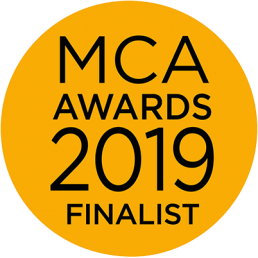




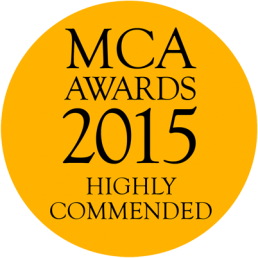
CONTACT US TO FIND OUT HOW WE CAN HELP
How to leverage your workforce
In his latest blog post, Rodrigo Quezada explores what business leaders can do to manage a workforce comprised of five generations.
Make your workforce your secret weapon
In the workplace, times they are still a’ changing… For businesses to remain prosperous they need to face a number of challenges, including how to leverage an inter-generational work force with different needs and motivations. In fact, today’s workplace can contain up to five generations: Traditionalists, Baby Boomers, Generation X, Millennials and Generation Z.
Business models are navigating disruptive technology and changing customer needs. In addition, companies across all industries need to be able to leverage their workforce to maintain their competitive edge. So, with such a diverse workforce that covers a wide range of generations, how can leaders keep their people engaged, productive and motivated? When designing organisation transformation programmes, these are the goals that I focus on. Whether the workforce is comprised of Traditionalists, Millennials, Gen X, Gen Z or all of the above, designing specific organisational structures to keep everybody working at their optimal levels in the workforce is key.
The generations redefining the workplace
Definitions of Millennials and Gen Zs, and the distinctions between them, vary according to the source. No matter the definition, these generations have transformed how people engage with work and communicate. This is influencing the way businesses must operate, now and in the future.
Characteristics of Millennials and Gen Zs
There are always be exceptions to the rule, but there are broadly a number of characteristics that define these generations:
-
- Experience over material– One study found that 78% of millennials would choose to spend money on a desirable experience or event over buying something desirable, and 55% of millennials say they’re spending more on events and live experiences than ever before. This affects the appeal of traditional perks offered by companies to their employees.
- Responsibility – Purpose is king and wider social value is becoming an increasingly important factor
- Digital – As ‘digital natives’, communication and consumer purchases are driven by digital devices and platforms
- Flexibility – Working 9-5 is no longer the way to make a living. Flexibility is increasingly important. As featured in a The New York Times article this week, “the rest of their lives happens on their phones, not tied to a certain place or time — why should work be any different?”
Enabling "Generation Go" to Stay
Millennials have been nicknamed “Generation Go”. To utilize their energy and commitment in the workforce, businesses need to provide flexibility and keep pace with them, or risk losing out on the very competitive edge that comes along with the innovation they bring. Traditionalists, Baby Boomers and Gen X leaders need to find a way to share their business knowledge with millennials. Currently, millennials are managing 65% of the work of others globally. If you haven’t focused on the retention of this generation, you could lose leverage. Studies have shown that millennials are more likely to change jobs due to the economy over previous generations.
The top reasons Millennials and Gen Z choose to leave a job is:
- Lack of shared purpose and connection to a bigger goal
- Minimum wage growth
- Lack of advancement opportunity
- Excessive hours
- A work environment that doesn’t foster teamwork
What business leaders can do
As a business leader, it’s important to understand the mentality of your workforce. This is increasingly complex due to the multiple generations. Some basic cultural elements will never change such as having decent morals and respect for your fellow employees, but truly understanding how different generations tick could be the driving force for a successful business. By the year 2025, it is predicted that 75% of the workforce will be comprised of Millennials and Gen Zs. Therefore business leaders must understand how to attract millennials, retain them, and maximize their job performance.
Importantly, business leaders must also know how to effectively create succession plans while maintaining a strong focus on execution and innovation, incorporating new generations like Millennials. Sharing skills between generations is key – adopting new ways of communicating while also passing down the critical business knowledge that has been accumulated throughout the organisation. For a successful workforce, leadership must excel in understanding their employees and how to leverage different types of knowledge to excel and lead in the market.
Communication is a two-way street
In my experience I have found that the most effective way for senior leadership teams to engage in this two-way channel is to create special spaces like buffer zones which include forums, channels, and programmes that consistently maintain an open communication kept alive and relevant on both ends. This, combined with the more classic approaches like Leadership Development Programmes, and High Potential programmes give enough “credentials” for a programme to be taken seriously and succeed over time.
Key questions business leaders can ask about their culture
If companies want to become generational friendly and attract an elite and talented workforce to keep the company progressive and lucrative, it may be time to make some changes.
- Does your company have a clear and shared purpose? Statistics now show employees perform better when they feel a connection to peers and management towards something bigger than just profits and business results
- Is your company culture rigid or flexible? Foster a community-type atmosphere. Get rid of the top-down management structure and replace it with a more lateral management approach with tons of open communication.
- Does your company still require formal business wear every day? Change to a more casual dress code, dress down.
- Are your incentive and compensation schemes effective? Start offering perks that go beyond cash bonuses that studies show are so easily forgotten. Instead, offer company vacations as incentives.
Enabling each employee to share their skills with the wider team, regardless of generation, is key. With the tremendous amount of knowledge and experience older generations have, offering apprentice and mentorship programmes are a great way to make the top and bottom of organisations closer and close the gap that may exist between different approaches. It is one of the best ways for business leaders to engage new generations and identify new business opportunities for the long term growth and path of an organisation.
Learn to leverage your workforce, and make it your secret weapon.
About the author
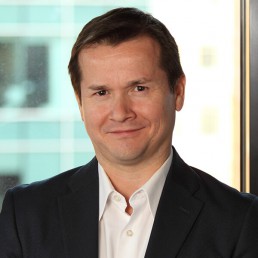
Rodrigo Quezada
Rodrigo is a strategy and operations Managing Consultant designing and leading business transformation projects
CONTACT US TO FIND OUT HOW WE CAN HELP
Chairman's Masterclass: "The Challenge of Longevity"
Event: The Challenge of Longevity27 November 2019, London
Event details
Where: Central London
When: 7pm-10pm, 27 November 2019
What: Dinner, Speech from AIG CEO Adam Winslow and Q&A
About the speaker
On 27 November 2019 we will be joined by Adam Winslow, Interim Chief Executive Officer of AIG’s global Life Insurance business, to discuss the Challenge of Longevity.
American International Group, Inc. (AIG) is a leading global insurance organisation with operations in over 80 countries.
Adam is responsible for AIG’s global life business (US and international). He also is a member of AIG’s Life and Retirement Executive Team.
Adam has served as Executive Director, UK Distribution; COO, EMEA Consumer; CEO, AIG Life Ltd (UK), and CEO, International Life and Retirement in London, before he was named Chairman of the Board of the AIG GBN pooling network in January, 2019.
Previous to working with AIG, he served various roles at Laya Healthcare, Aviva, BGL Group, and Allianz Global Investors.
Who should attend?
The Chairman’s Masterclass Dinner Series is a forum for senior business to discuss topical issues under Chatham House Rules.
Typical attendees include Chief Executive Officers, Chief Financial Officers, Chief Commercial Officers, Chief Strategy and Transformation Officers, Managing Directors and business unit Directors.
Register your interest
Complete this form or email events@curzonconsulting.com to register your interest
Please note that spaces are limited.

This is the latest event in our Chairman’s Masterclass Dinner series, providing UK business leaders with insight for over a decade.
Register your interest to attend this event in London, UK.
Please note that spaces are limited.
Other events
CONTACT US TO FIND OUT HOW WE CAN HELP
Digital forum: "AI at scale"
Event: "AI at Scale"2 October 2019
Join us for a Digital forum on “AI at Scale”, hosted by our Nextcontinent partner Eurogroup. We will hear from industry leaders on what it takes to successfully deploy Artificial Intelligence solutions at scale to address real business challenges.
Event details:
Date: 2 October 2019
Time: 6pm-8pm
Location: The Den, 14 Bedford Square, Fitzrovia, London WC1B 3JA
Spaces are limited, so RSVP below or email events@curzonconsulting.com to reserve your place
About the author

Other events
CONTACT US TO FIND OUT HOW WE CAN HELP
Blockchain in healthcare: a use case
Curzon Healthcare lead Chetan Trivedi explores how Blockchain in healthcare will revolutionise the billing and payment process. This will result in the complete disintermediation of a vast administrative layer within the healthcare Provider and Payer (private insurer or public commissioner) organisation.
Consequently, Healthcare Providers and Payers will see a huge benefit through a more streamlined process of handling claims and processing payments. The process will also include various steps like checking patient insurance eligibility and coding claims.
Illustrative smart billing and payment process
The example shown below is based on an insured patient, but the process would be similar for the public sector.
1. Upfront
- Insurer and Provider enter into a Smart Contract on Ethereum blockchain
- The smart contract would be self-executing with the terms of the agreement directly written into code
- The smart contract would exist on a distributed and decentralised blockchain network
- Smart contract would permit trusted transactions and agreements to be carried out between Insurer and Provider without the need for manual intervention (Provider and Insurer), central authority, legal system, or external enforcement mechanism
- Each transaction would be completely traceable, transparent, and irreversible
- Automated invoice and subsequent payment would be triggered (i.e. self-billing) inline with pre-agreed protocols and care pathway (incorporated into the Smart Contract)
- Micropayments are triggered after each care package has been completed
- Penalties are built into the Smart Contract and are assessed automatically if Provider fails to meet quality metrics (e.g. readmission rates, infection rates, revision rates, etc.) or poor outcomes (e.g. PROM, Oxford scores)
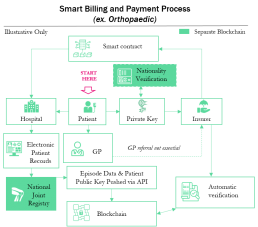

2. Ongoing
- Patient experiences symptoms (e.g. increase pain, reduce mobility etc.)
- Patient visits GP (Physician) or contacts Insurer directly (based on policy guidelines)
- Patient accesses Insurer policy automatically using Private Key
- Insurer automatically routes referral to Orthopaedic Consultant or Provider inline with policy
- Patient commences journey through care pathway (e.g. pre-op, op, post-op, discharge, follow up, etc.) and is treated by the Provider against a pre-agreed set of protocols (consultation, imaging, pathology, implant, physiotherapy, etc.) with the Insurer
- Provider feeds data into Electronic Patient Records (EPR). Standard data linked to specific non identifiable Patient Public Key and is published automatically onto the Blockchain via API
- Insurer automatically validates treatment against pre-agreed care pathway and protocols and automatically triggers payment (see Payment Triggers to left)
About the author
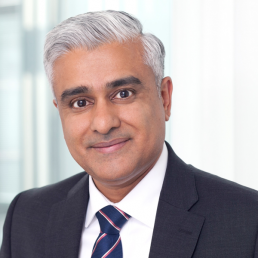
Chetan Trivedi
I lead Healthcare at Curzon Consulting.
For over 15 years I have supported Healthcare payers, providers and medical devices companies on strategy, operational improvement and digital transformation engagements across the UK, wider Europe, Middle East, US, India and Canada.
I am deeply passionate about improving health outcomes, safety and quality of life for patients.













